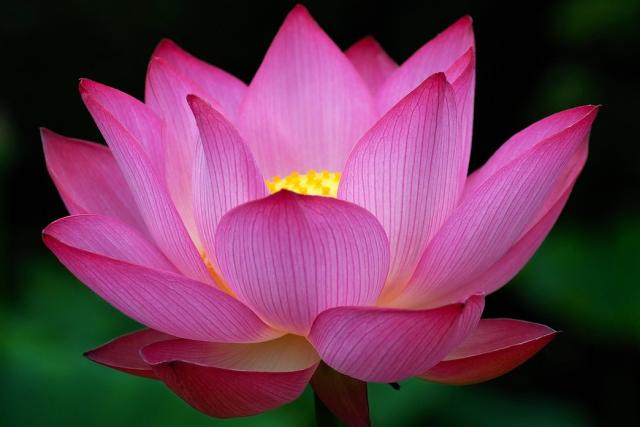Flowers are not only beautiful, but they can be used as essential ingredients in a food and medicine. Many edible flowers are rich in phenolics and have excellent antioxidant capacity. They can be added to your food or in teas to prevent chronic disease.
Flower Remedies are very simple, since they are almost tasteless, they can be taken along with any food, in the drinking water, or directly in the mouth. In addition, the dosage is standard for almost all animal species, regardless of size, age, or states of health.
Flowers do not oppose traditional drugs, since their action impacts on a different plane. This allows the health practitioners to not necessarily make drastic therapeutic choices (Flower Remedies vs. drugs); rather, they combine very well with traditional treatments since they help the people and animals to better overcome stress situations and to be an active part in the healing process.
1) Jasmine: The scent of jasmine promotes a sense of well-being and calm. As a fragrant flower, it is usually blended with green tea and added to salads. It is said to have anti-carcinogenic and anti-viral properties. The health benefits of jasmine tea include a reduced risk of heart attacks, a stronger immune system, and the prevention of diabetes.
2) Rose: The king of flowers has a special place in Chinese medicine. They are said to contain phenolics, which are believed to have anti-inflammatory properties. Said to be a rich source of vitamins, it is believed to reduce the risk of heart diseases, cancers and diabetes. Red roses enhance the energy in our body and make us more active by stimulating adrenal glands, the indigo of an iris makes us more confident and tranquil by removing fear or inhibition.
3) Peony: The lovely peony does not just decorate wedding corsages, but when eaten can also alleviate you from depression. Peony is one of the oldest flowers, with 4000 thousands years of history. Peony has strong sedative, calming and anti-convulsive properties. It is often used for neurological disorders, strained nervous conditions or nightmares, and high blood pressure. Peony contains an antibacterial compound, paeonol, which makes it a valuable anti-inflammation and anti-fungal ingredient for treating wounds, skin irritations and inflammations.
4) California Poppy: Don’t worry when using California Poppies since they are not addictive and do not have any opium in the plant. However, it can be used to help reduce anxiety and insomnia, as well as bladder problems in children and adults. California Poppies can be used along with other natural sources over a longer period of time to help with depression and fatigue.
5) Pansies: These bright coloured big flowers not only makes pretty picture, but is beneficial for your heart, kidney, blood pressure among others as it's high on potassium and other minerals. Ointments and skin creams made with pansy as an ingredient have anti-bacterial and anti-fungal properties. Pansy is therefore used to treat skin ailments such as psoriasis, acne, eczema, itching, impetigo, and cradle cap. Drinking pansy tea or using it as a poultice on the skin can is effective as well.
6) Hibiscus: Often used as garnish in salads, hibiscus or shoe flower are also brewed as tea. Known to contain anthocyanins and antioxidants, they are also said to lower blood pressure and cholesterol levels. Hibiscus leaf is a rich source of polyphenols which are thought to have hypolipidemic (lipid-lowering) and antioxidant effects. A study conducted in Portugal found that drinks containing hibiscus exhibited higher antioxidant activity than other beverages. Hibiscus leaf polyphenols (HLP) are also a functional food against cancer.
7) Lotus: Lotus flowers are popular in both Eastern and Western cultures for their effectiveness against fever, diarrhea and also more serious illnesses such as cholera and bronchitis. A syrup made from the flower provides much relief for bad coughs.
8) Marigolds: Popularly known as genda phool in India, the Chinese are known to use marigolds in tea. The flower is also used topically to heal wounds. The flower is also said to be high on the pigment lutein, also known as eye vitamin, which is necessary to keep eye diseases at bay.
9) Chrysanthemum: High in anti-oxidants and minerals, chrysanthemums have anti-carcinogenic and anti-inflammatory properties. Chemicals extracted from chrysanthemum flowers can reduce inflammation. Chrysanthemum extracts have been found to help treat bone disorders like osteoporosis.
10) Passionflower: Passionflower contains medical properties best suited for treating disorders such as insomnia, agitation, anxiety, and epilepsy. It also acts on the nerves to reduce pain and induce a calming sensation.
11) Blood Root: This little white flower is very effective in low doses when treating respiratory problems. It can be made into a paste when mixed with other compounds and applied on the skin to treat rashes, warts and various dermic problems. When ingested as a tea or tonic, bloodroot is very effective in cleansing the blood and lowering fevers.
12) Bellis Perennis: Also known as the common daisy, this flower holds a wealth of medicinal properties despite its unassuming appearance. When used in an infusion, it acts as a laxative as well as an expectorant to purge the body of toxic matter. It is also used as a home remedy to help treat physical disorders such as arthritis and rheumatism. Direct application to the skin through an ointment or poultice aids in healing wounds.
Article sources:
flowersociety.org
organicfacts.net
proflowers.com




Replies